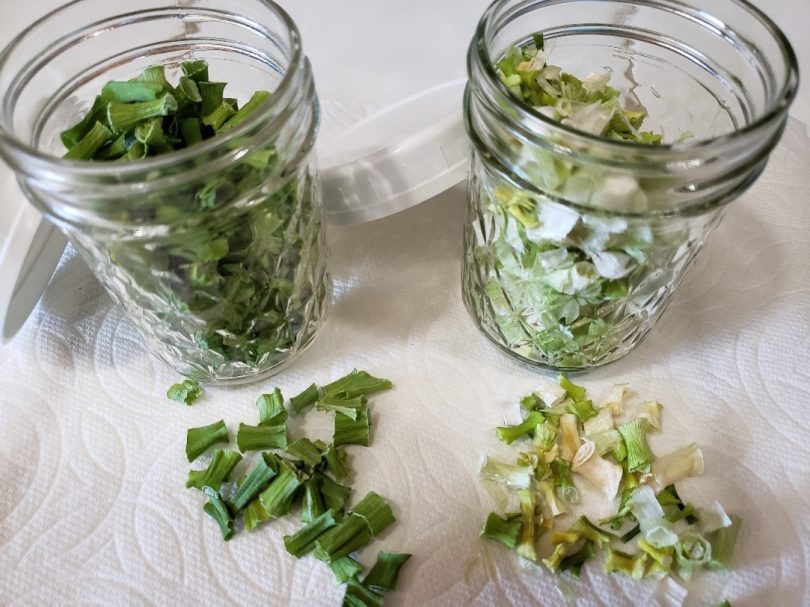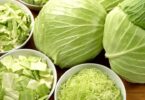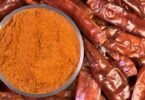Here are some easy methods for dehydrating green onions at home.
Sure, green onions are inexpensive. They are likewise quite easy to grow. Thus, you may think that dehydrating green onions isn’t worth the time and effort. However, having a stock of dehydrated green onions in your pantry is much better than the store-bought varieties that are not only lifeless but tasteless as well.
Dehydrated green onions offer a lot of fresh flavor to your inventory of spices. It will also save you on unnecessary grocery trips in case you run out or have forgotten to buy some.
Having said that, here’s how to properly dehydrate green onions to guarantee you a steady supply throughout the year.
SEE ALSO: 5 Methods of Dehydrating Onions at Home
How to Dehydrate Green Onions
Dehydrating green onions using a food dehydrator
Using a food dehydrator is the most convenient way to dry green onions. You can also use your oven for the process if a dehydrator is not available.
- Preheat the food dehydrator at 95F – 125F/35C – 52C.
PRO TIP – when dehydrating fruits or veggies, always make sure to preheat the dehydrator beforehand – at the proper temperature. Setting the heat higher, doesn’t really speed up the dehydration process. It may only cause your fruits or veggies to harden.
- Cut off the root ends. Before washing the green onions, cut off the root ends first. This way, you get to save on time and water that you would otherwise consume in cleaning the parts that you would only discard later. After all, you can’t compost or replant the parts later.
If there’s a little of the white bulb left, and parts of the green leaves show, you can re-plant it in your small kitchen garden if you have one.
- Wash and strip. Make sure to get rid of all debris that may be left hanging out in the leaves. Likewise, strip the outer layer off if it is about to come off.
- Chop the onions into small and uniform pieces. The chopped pieces must have a uniform size. This way, they will dehydrate equally. It is a good idea to separate the onions at the natural point of separation between the leaves and the stem.
The green onion’s white bulbous part possesses a more pungent flavor compared to the milder leaves. They can thus be stored and used separately.
- Separate the white rings (if preferred). The vegetable’s white portions are denser, but they can be separated. By separating the white parts, you can ensure that everything will dehydrate at the same time. If you leave the white portions intact, they will take a longer time to dry up.
You can opt to split the green onion’s bulbous part. You can likewise use a chopstick or a fork to poke through the veggie, and split the layers. While this step is not really necessary, it can help in shortening your total dehydrating time.
- Lay down the chopped green onion pieces on dehydrator trays. Allow the veggies to dry for 3 to 5 hours at a preset temperature of 95F – 125F. While most dehydrators would recommend drying green onions at 125F, dehydrating at a lower temperature will help keep the nutrients intact. It means you can dehydrate green onions at 95F/32C as well, but it will take more time.
PRO TIP. Treat green onions as herbs, and as such, should be dried under lower temperature settings.
Green onions are done and completely dehydrated when they crinkle, and easily break or crush. Allow the dried veggies to cool down to room temperature first before testing.
Store the dried green onions properly. – Place the dried green onions in sealed containers. More on the proper storage procedures in a later section.
Dehydrating green onions using an oven
If a food dehydrator is not available, you can instead use your oven to dry green onions.
- Set the oven at the lowest possible temperature. Keep the oven door slightly open. You can use a chunk of aluminum foil to keep the door ajar.
- Prepare some cookie sheets lined with parchment paper.
- Prepare the green onions for drying. Follow steps 2 to 5 above (drying green onions using a food dehydrator).
- Evenly spread the chopped green onions on the cooking sheets/pans. The green onions will dry up quickly – so keep an eye on them, check at least after every five minutes.
Allow to cool down at room temperature. – Take the green onions out of the oven and test for dryness level. The green onions are done once and completely dried when they crinkle, and break or crush easily.
Rehydrating Dried Green Onions
When ready to use, put pieces of dried green onions into a half-filled bowl of boiling water. Let the veggies steep and rehydrate for a couple of minutes.
After rehydrating the veggies, don’t throw the water away. If you used a white bowl, you probably have noticed the water turn green. This is due to the veggies’ chlorophyll and nutrient contents. You can use the broth for any dish you’re preparing – if it’s a wet dish.
If you’re not yet ready to use the broth, you can just freeze it in ice cube trays for use later. You can use it when preparing soups, broth, and rice, among others.
How to Store Dried Green Onions
Soon after drying and cooling down, store the dehydrated green onions in airtight containers. If you intend to store them for a long period of time, say a few months, you can add an oxygen absorber or you can vacuum seal the containers.
You can use airtight mason jars for storage, especially if you use dried green onions frequently. This way, you can have easy access to them whenever you need to use some.
SEE ALSO: How to Store Dried Vegetables
Having a ready supply of dried green onions in your kitchen at all times can be a blessing. You can use it for your morning egg recipes or for your mashed potatoes for supper. Just toss some dried veggies into hot water to rehydrate before using





